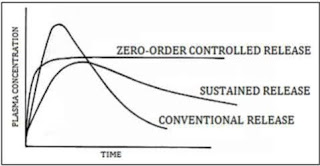Classification of virus
Classification of virus
• Viruses are small obligate intracellular parasites, which by definition contain either a RNA or DNA genome surrounded by a protective, virus-coded protein coat.
• Viruses range from the structurally simple and small parvoviruses and picornaviruses to the large and complex poxviruses and herpesviruses.
• Viruses are classified on the basis of morphology, chemical composition, and mode of replication.
• The viruses that infect humans are currently grouped into 21 families, reflecting only a small part of the spectrum of the multitude of different viruses whose host ranges extend from vertebrates to protozoa and from plants and fungi to bacteria.
On the Basis of Genetic Material Present
• Viruses are small, nonliving parasites, which cannot replicate outside of a host cell.
• A virus consists of genetic information — either DNA or RNA — coated by a protein.
• Accordingly, they are classified as DNA viruses and RNA viruses.
• The nucleic acid may be single or double stranded, circular or linear, segmented or unsegmented.
DNA viruses
• As their name implies, DNA viruses use DNA as their genetic material.
• Some common examples of DNA viruses are parvovirus, papillomavirus, and herpesvirus.
• DNA viruses can affect both humans and animals and can range from causing benign symptoms to posing very serious health.
RNA viruses
• The virus that possesses RNA as genetic material are called RNA viruses.
• Rotavirus, polio virus, yellow fever virus, dengue virus, hepatitis C virus, measles virus, rabies virus, influenza virus and Ebola virus are examples of RNA virus., coronavirus.
DNA-RNA viruses
• The RNA tumor viruses called Leukoviruses and Rous’s viruses unusually contain both DNA and RNA as genetic material.
On the basis of the presence of a number of strands
• Double-stranded DNA
It is found in pox viruses, the bacteriophages T2, T4, T6, T3, T7 and Lamda, herpes viruses, adenoviruses etc.
• Single-stranded DNA
It is found in bacteriophagesφ, X, 74 bacteriophages.
• Double-stranded RNA
It has been found within viral capsid in the reoviruses of animals and in the wound tumour virus and rice-dwarf viruses of plants.
• Single-stranded RNA
It is found in most of the RNA viruses eg: tobacco mosaic virus, influenza virus, poliomyelitis, bacteriophage MS-2, Avian leukemia virus. ALL,CLL
On the Basis of Presence of Envelope
• The envelope is a lipid-containing membrane that surrounds some virus particles. It is acquired during viral maturation by a budding process through a cellular membrane
• Virus encoded glycoproteins are exposed on the surface of the envelope. These projections are called peplomers.
• What is Peplomers?
Enveloped Virus
• DNA viruses: Herpesviruses, Poxviruses, Hepadnaviruses
• RNA viruses: Flavivirus, Toga virus, Coronavirus, Hepatitis D,
Non-Enveloped Virus
• DNA viruses- parvovirus, adenovirus and papovavirus.
• RNA viruses- Hepatitis A virus and Hepatitis E virus.
Hepadnaviridea- hepatitis,hepadnavirus
On the Basis of the Type of Host
The virus can be classified on the basis of the type of host. They are:
1. Animal viruses
2. Plant viruses
3. Bacteriophage
Animal Viruses
The viruses which infect and live inside the animal cell including man are called animal viruses. Eg; influenza virus, rabies virus, mumps virus, poliovirus etc. Their genetic material is RNA or DNA.
Plant Viruses
The viruses that infect plants are called plant viruses. Their genetic material is RNA which remains enclosed in the protein coat. Some plant viruses are tobacco mosaic virus, potato virus, beet yellow virus and turnip yellow virus etc.
Bacteriophages
Viruses which infect bacterial cells are known as bacteriophage or bacteria eaters. They contain DNA as genetic material. There are many varieties of bacteriophages. Usually, each kind of bacteriophage will attack only one species or only one strain of bacteria.



Comments
Post a Comment
Thanks